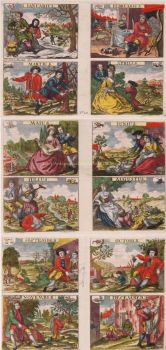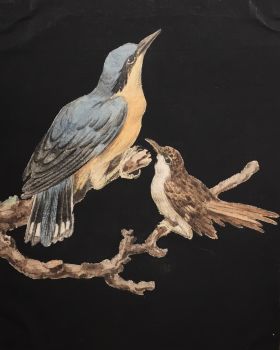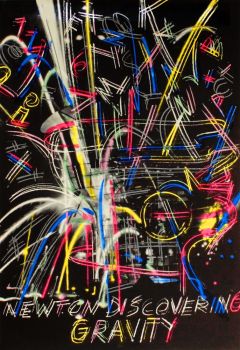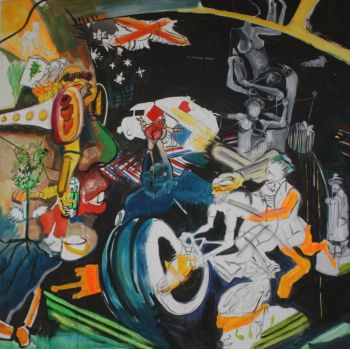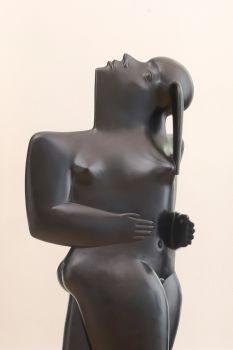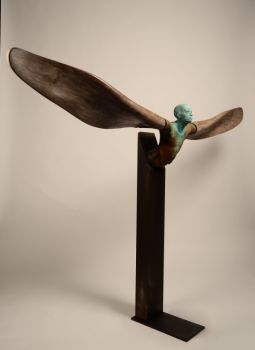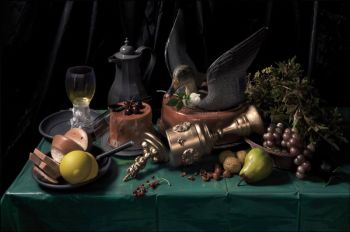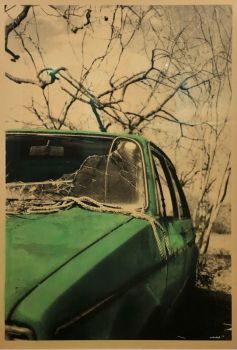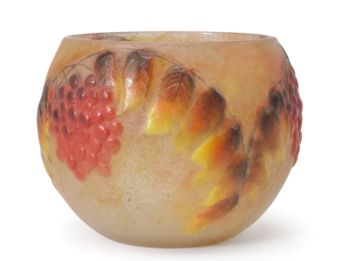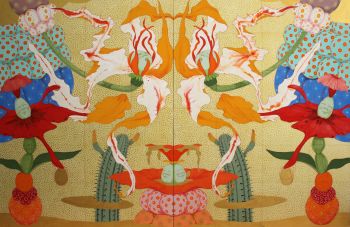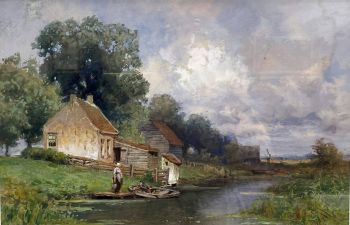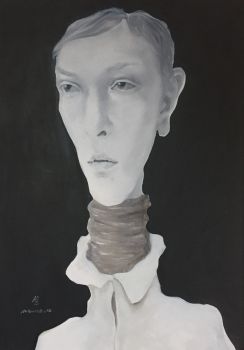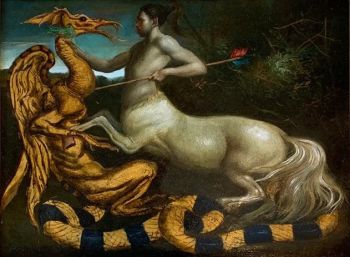How to buy art via online art auctions
The auction world comes with her own habits and rules, especially on viewing days. Contrary to a museum visit, at auction previews you are able to inspect the artworks with all five of your senses. Hear the ‘cri d’etain’ of a tin saucer, take a whiff of the silver content, taste real pearls, see the differences in quality and touch everything!
Taste the authenticity of jewels with your teeth
It might be an amusing sight but it's actually very useful: tasting pearls with your own teeth. By rubbing a pearl against your front teeth you can actually feel its authenticity. If it feels rough and grainy you’re dealing with a good one, but if the pearl is too smooth, it’s time to look further. Besides this there are other tricks to pick out the real ones. Real pearls are generally strung with a silk thread, with knots inserted between each one. Furthermore if a pearl is presented in combination with gold or white gold components, it is more likely to be real. After all, you wouldn’t set a fake pearl in a ring of precious metal.
What characteristics can make your artwork more saleable?
*A famous example is that of the 17th century Vanitas still-life paintings in which the human skulls, when depicted, would indicate mortality. If this skull is not included in the painting it becomes more pleasant to look at and the value increases by at least 20 percent.
*Winterscapes are always more expensive than summerscapes, because happy figures on the ice drinking hot chocolate appeal to one’s imagination.
*There exists a whole hierarchy in the category of animal paintings: horses are more expensive than cows; cats are considerably more costly than dogs. Every kitten painted by Henriëtte Ronner-Knip (1821- 1909) easily costs double than a puppy by the artist's hand. The explanation here is simple: the affection of cat lovers or collectors is common and boundless, while among the fancier of the Pitbull, German shepherd or Jack Russel the difference can be made when comparing a Volvo to a Mercedes.
*Another famous example of price ranges can be found in the work of Anton Mauve (1838-1888), famous for his works depicting sheep. If the flock faces the direction of the viewer ‘sheep coming’ then it is a very saleable piece, but if the flock is depicted walking away from the viewer ‘sheep going’, the painting will be at least half the price.
*Last but not least: portraits of women do, especially if the portrayed girl is attractive, sell much better than male portraits.
Henriëtte Ronner-Knip (1821- 1909), kittens, 1894
Distinguish quality
What is the provenance of an auction piece, how good is the condition and where does the work place within the oeuvre of the artist? On viewing days the auction experts are more than willing to provide you with all the background information you need.
Don’t hesitate to examine the backside of a painting or the silver marks of a candelabrum. The important thing when buying art and antiques is to distinguish the quality. Bob Haak, a member of the Rembrandt Research Project, once said: ‘we already know how exquisite Rembrandt's work is, but how bad he ‘can’ be, that’s the interesting part.'
Decide your maximum bid beforehand
How do you prevent yourself from getting seduced by placing a bid above your budget? By determining a maximum bid before the auction starts. At first, take extra costs like the premium price and the artist's resale right into consideration. Because there will always be the risk that another candidate bids your maximum, it’s in your benefit to go one above your set limit. With written bids you can easily bid €1 above the valid bid increment: so €1.001 instead of €1.000. If the bidding war strikes at €1.000, then the beloved piece is yours!
A view at Veilinghuisgebouw de Zwaan in Amsterdam
If you don't want to buy at an auction you can also have a look at the artworks directly available and curated at Gallerease!







